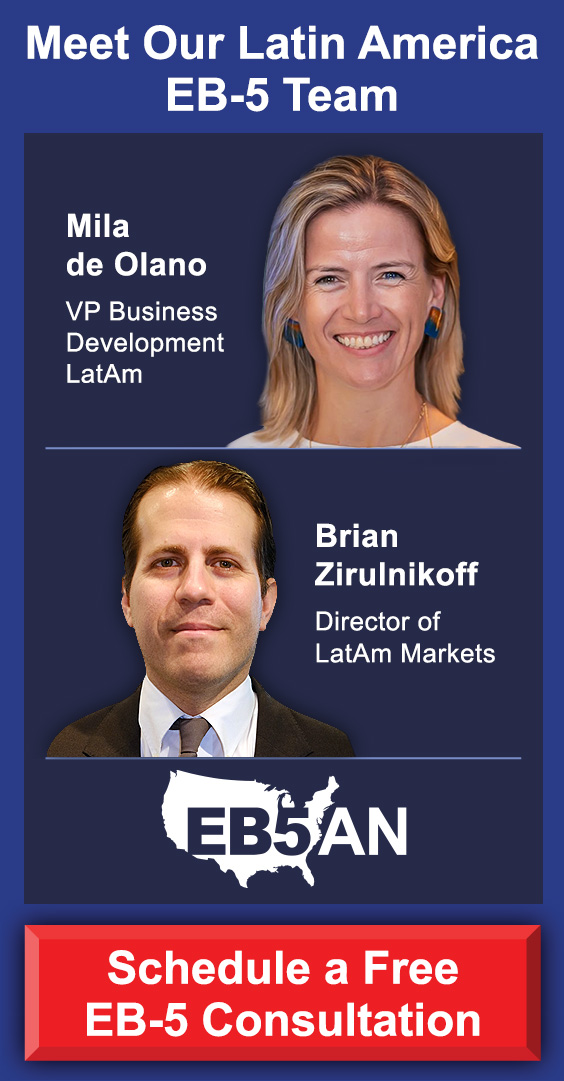The EB-5 Immigrant Investor Program has long been a popular path for foreign nationals to obtain a U.S. Green Card.
In its 35-year history, the program has undergone several major reforms, with one of the most significant changes coming in the form of the EB-5 Reform and Integrity Act of 2022 (RIA).
This update not only modified key aspects of the program but also introduced important changes to the sustainment period rule, which can significantly affect an investor’s strategy when choosing projects.
The sustainment period rule is the minimum period during which an investor’s capital must remain “at risk” in a qualifying U.S. new commercial enterprise to fulfill the requirements of the program.
Understanding this rule—and its implications for investment and immigration timelines—is critical for minimizing risk and ensuring the long-term success of an EB-5 investment.
What Is the Sustainment Period Rule?
Changes Under the EB-5 Reform and Integrity Act of 2022
Why the Sustainment Period Rule Is Crucial for Investors
- Impact on Project Duration and Return on Investment
- Redeployment Risk and Its Implications
- Faster Processing Times for Rural Projects
- Predictable Investment Timelines
How to Choose the Right Project
EB5AN Can Help You Choose the Right Project
What Is the Sustainment Period Rule?
At the core of the EB-5 program is the requirement that investors commit their capital to a U.S. new commercial enterprise, keeping the investment “at risk” of either gain or loss. This requirement is designed to ensure that investors contribute to the U.S. economy by supporting job creation and business development.
In essence, the sustainment period refers to the amount of time that an investor’s funds must remain “at risk“—or subject to loss—to meet the immigration goals of the program.
Historically, this period depended on the time it took for U.S. Citizenship and Immigration Services (USCIS) to process the investor’s petition and Green Card application.
Changes Under the EB-5 Reform and Integrity Act of 2022
The RIA brought significant changes to the EB-5 program, including new rules that affect the sustainment period.
Specifically, the RIA shortened the sustainment period for new investors to two years. This adjustment, while positive for some, has had a profound impact on the way investors evaluate their options.
However, it is important to note that pre-RIA investors—those who filed before the reform—are still required to meet the older, longer sustainment period rule. This creates a distinction in the program for investors, adding complexity to decision-making.
Why the Sustainment Period Rule Is Crucial for Investors
The sustainment period directly impacts how EB-5 investors choose projects, as it plays a key role in the overall timeline and risk level of the investment.
Let’s explore the primary ways this rule affects investment strategies.
Impact on Project Duration and Repayment
Under the RIA, the shorter two-year sustainment period for post-RIA investors makes the timelines for EB-5 projects more predictable. With a two-year commitment, an investor’s capital may remain at risk for a defined period, which may make it easier to choose a project that aligns with their personal immigration goals.
Under the previous framework, the sustainment period was linked to the duration of conditional residency, which varied based on USCIS processing times.
For investors looking to mitigate risk, projects that align with the current sustainment rule will likely be more appealing. Projects may be structured to align better with the two-year sustainment period, and as a result, investors can secure their Green Card and then exit without prolonged waiting times.
Redeployment Risk and Its Implications
However, one of the most significant challenges for EB-5 investors, particularly those involved in regional center projects, is the risk of redeployment.
Redeployment occurs when an investor’s funds are reinvested into another project if the initial project’s term ends before the sustainment period ends. Generally, the goal of redeployment is to maintain the “at risk” status of the capital as required by the program.
For instance, suppose the project you invested in finished ahead of schedule, being completed only a year and a half after the deployment of your funds. Even if the project is completed early, the funds cannot be returned until the full sustainment period is met.
When this happens, your funds will need to be deployed into a different project—otherwise, you will not meet the program’s requirements for a Green Card.
Redeployment creates additional risks for investors.
In particular, investors may find that their funds are being reinvested in projects that do not align with their goals. In some cases, regional centers may even take advantage of the situation by redeploying funds into higher-risk ventures without investor approval—doing so may lead to higher gains for the regional center operators at the expense of the investors’ funds.
The possibility of having to reinvest funds into an unfamiliar project adds uncertainty, and the more times funds are redeployed, the higher the chances of encountering financial losses.
Notably, the two-year sustainment period under the RIA has reduced the likelihood of redeployment, as the funds must remain at risk for a relatively shorter duration. This minimizes the potential for invested capital to be tied up in projects that could cause delays or losses, making it a significant benefit for EB-5 investors.
Faster Processing Times for Rural Projects
Under the new rules, rural targeted employment area (TEA) projects receive two key benefits: They receive a 20% visa set-aside—meaning 20% of the annual visa quota is allocated to these projects—and applicants in these projects receive priority processing.
These advantages make selecting a rural TEA project an appealing option. The higher visa quota and quicker processing times significantly reduce the time it takes to receive a Green Card and thus help avoid the risks of redeployment.
Predictable Investment Timelines
One of the most overlooked benefits of the EB-5 program’s recent reforms are the predictable timelines they have established.
The reduction in the sustainment period provides a clearer path to obtaining a Green Card without needing to wait for an uncertain investment timeline.
In particular, choosing a project with a defined term of at least five years can help ensure that the capital remains at risk long enough to satisfy USCIS requirements, while also providing predictability.
This predictability allows investors to plan their immigration strategy with more confidence: Instead of worrying about the risk of their capital being tied up for several additional years, they can focus on choosing projects that meet both their financial and immigration goals.
How to Choose the Right Project
When evaluating EB-5 projects, it’s important to keep in mind the sustainment period rule and how it interacts with the project’s duration, timeline, and potential for redeployment.
Here are a few key aspects to consider when choosing between projects:
- Project Duration: Choose a project with a loan term or investment horizon that comfortably exceeds the sustainment period requirement. For post-RIA investors, medium-duration rural projects are a strong option, lowering the likelihood of redeployment without the investment duration being overly lengthy.
- Risk of Redeployment: Be cautious of projects that might repay investors’ capital too early. Look for those with more predictable investment timelines to avoid the risk of redeployment, even if this means the investment duration might be a bit longer.
- Due Diligence: Always perform thorough due diligence on the project and regional center. Understanding the project’s financial viability and developer’s track record will help you assess the risk level.
EB5AN Can Help You Choose the Right Project
The sustainment period rule has significant implications for how EB-5 investors choose their projects. With the shortened two-year sustainment period under the RIA, investors now face more predictable timelines and reduced risks of redeployment.
Choosing the right project from the outset is key to minimizing risks and maximizing your chances of a successful EB-5 investment. By understanding the sustainment period rules and how they affect investment timelines, investors can make more informed decisions and ensure that their capital remains “at risk” for the right duration without unnecessary delays.
EB5AN has helped more than 2,700 families from 70+ countries relocate to the United States as lawful permanent residents. Our expert team has more than a decade of experience, and we offer our clients first-rate, low-risk EB-5 regional center projects with a 100% USCIS project approval rate.
If you would like to know more about the sustainment period or how to take advantage of the RIA’s changes, book a free call with our expert team today.










